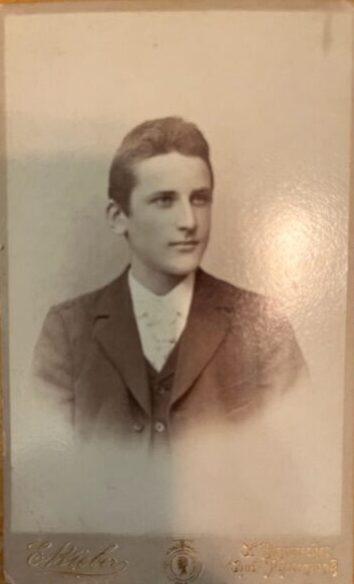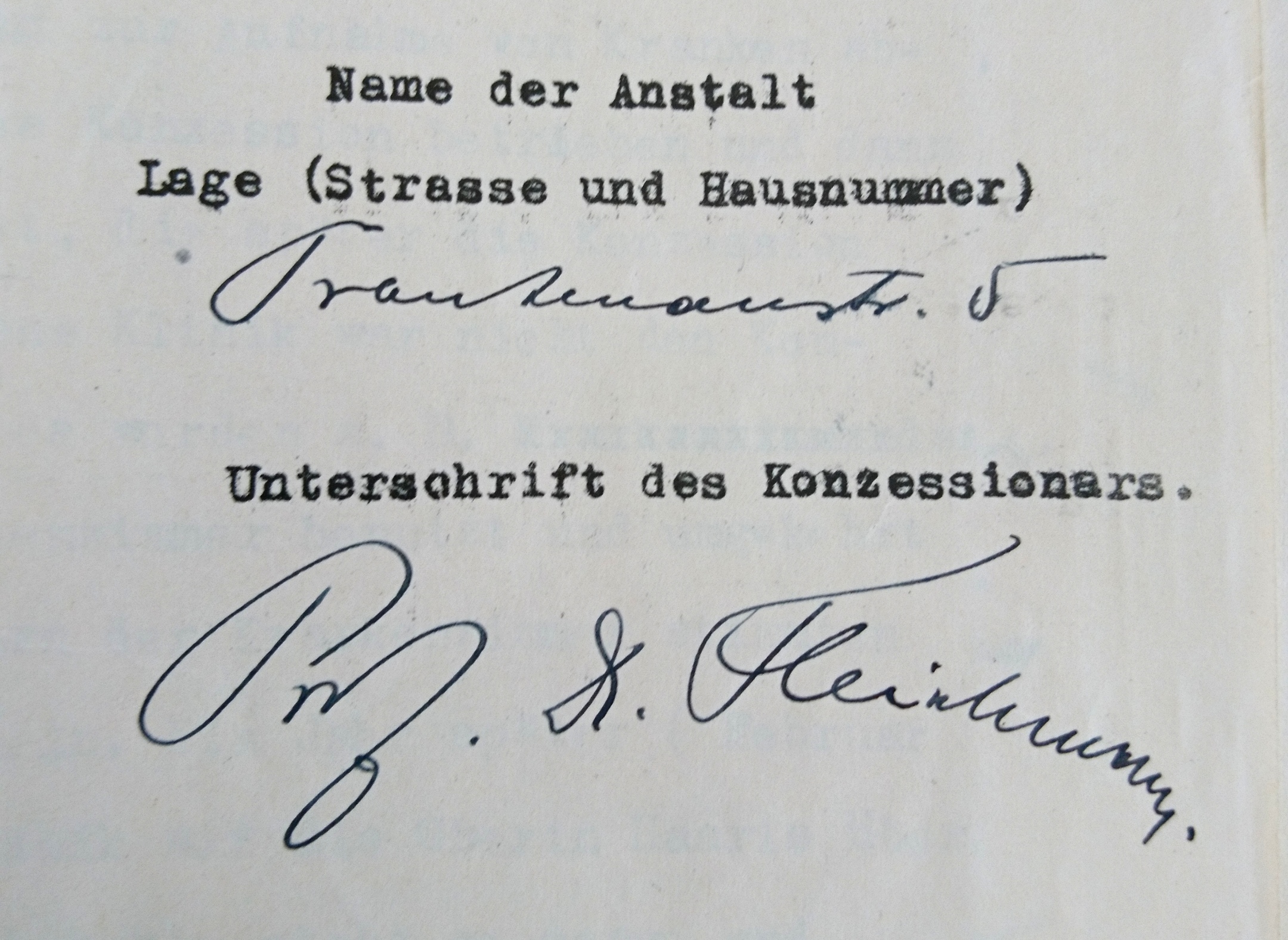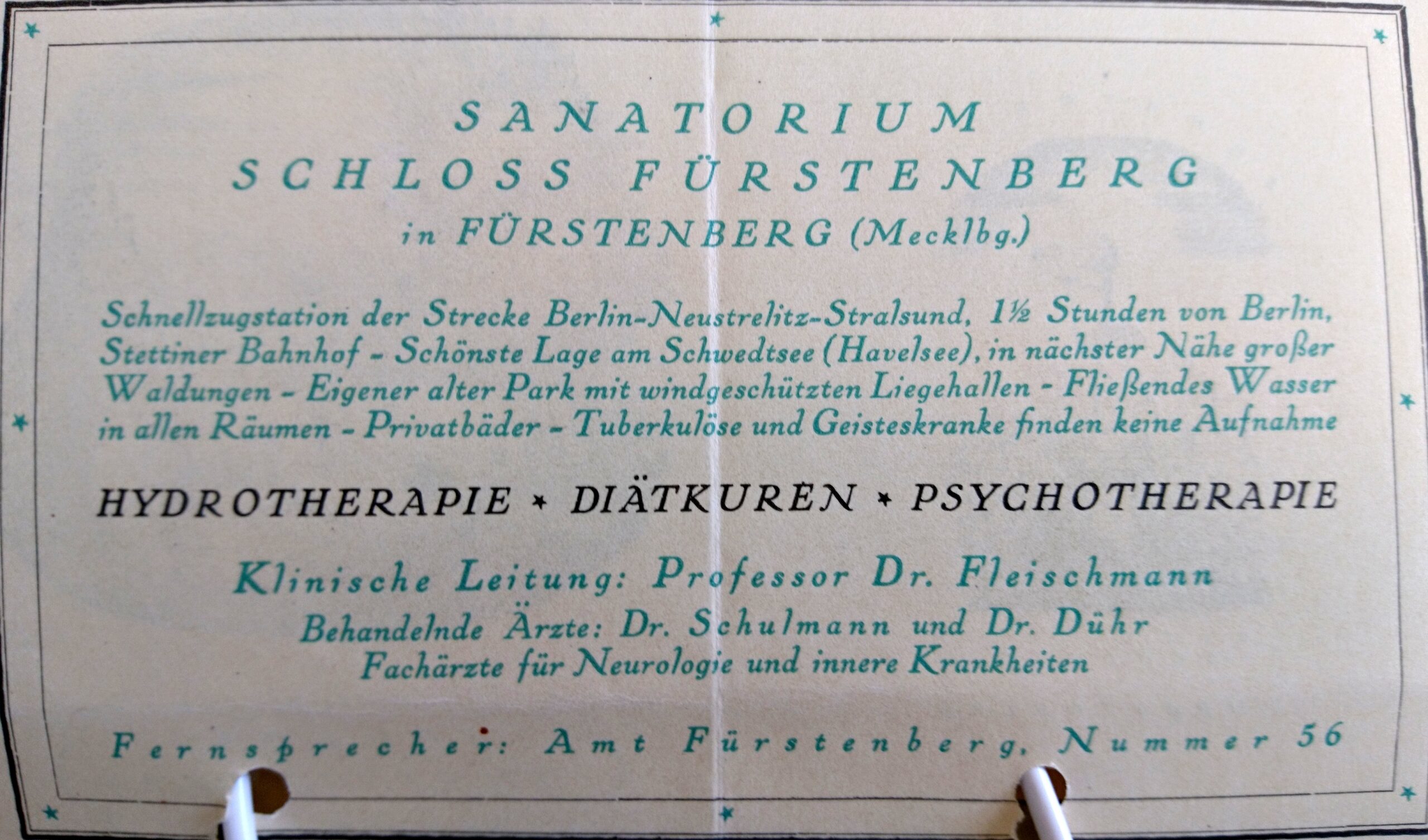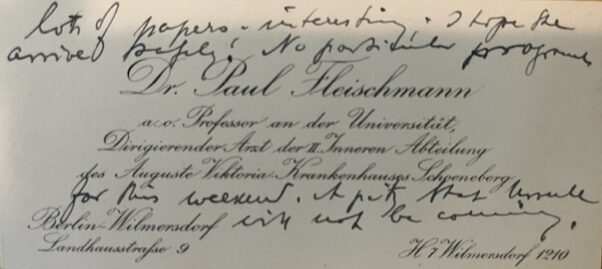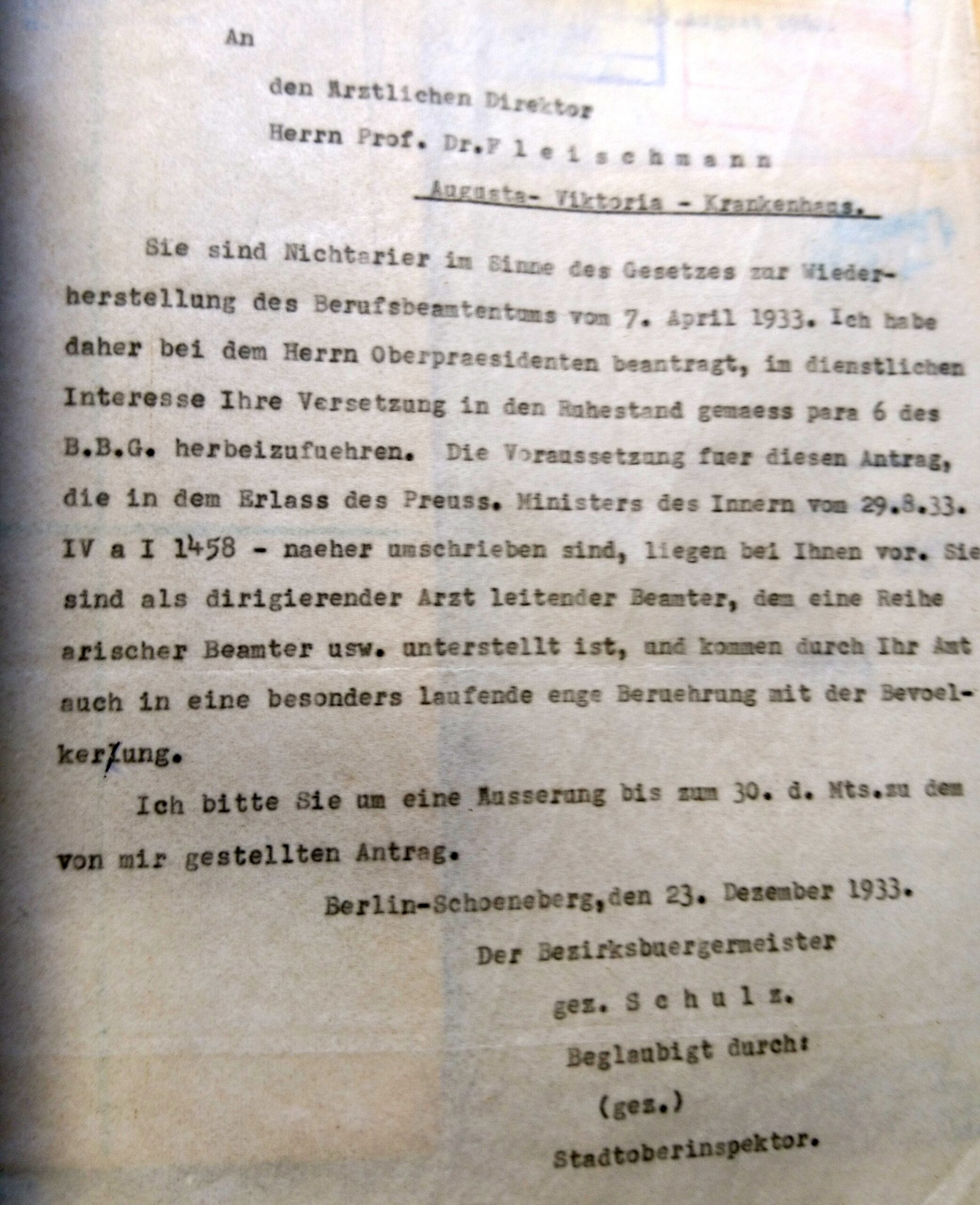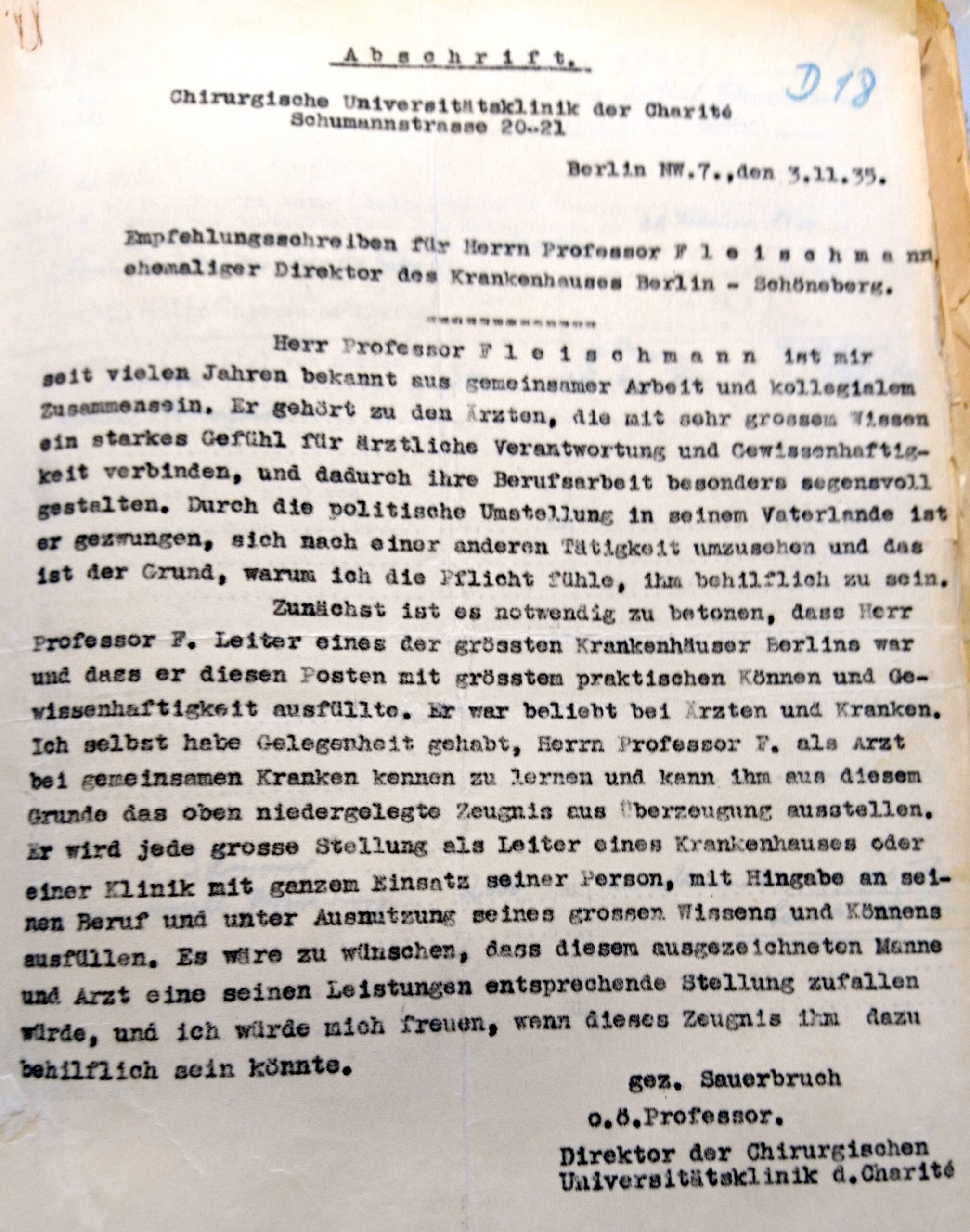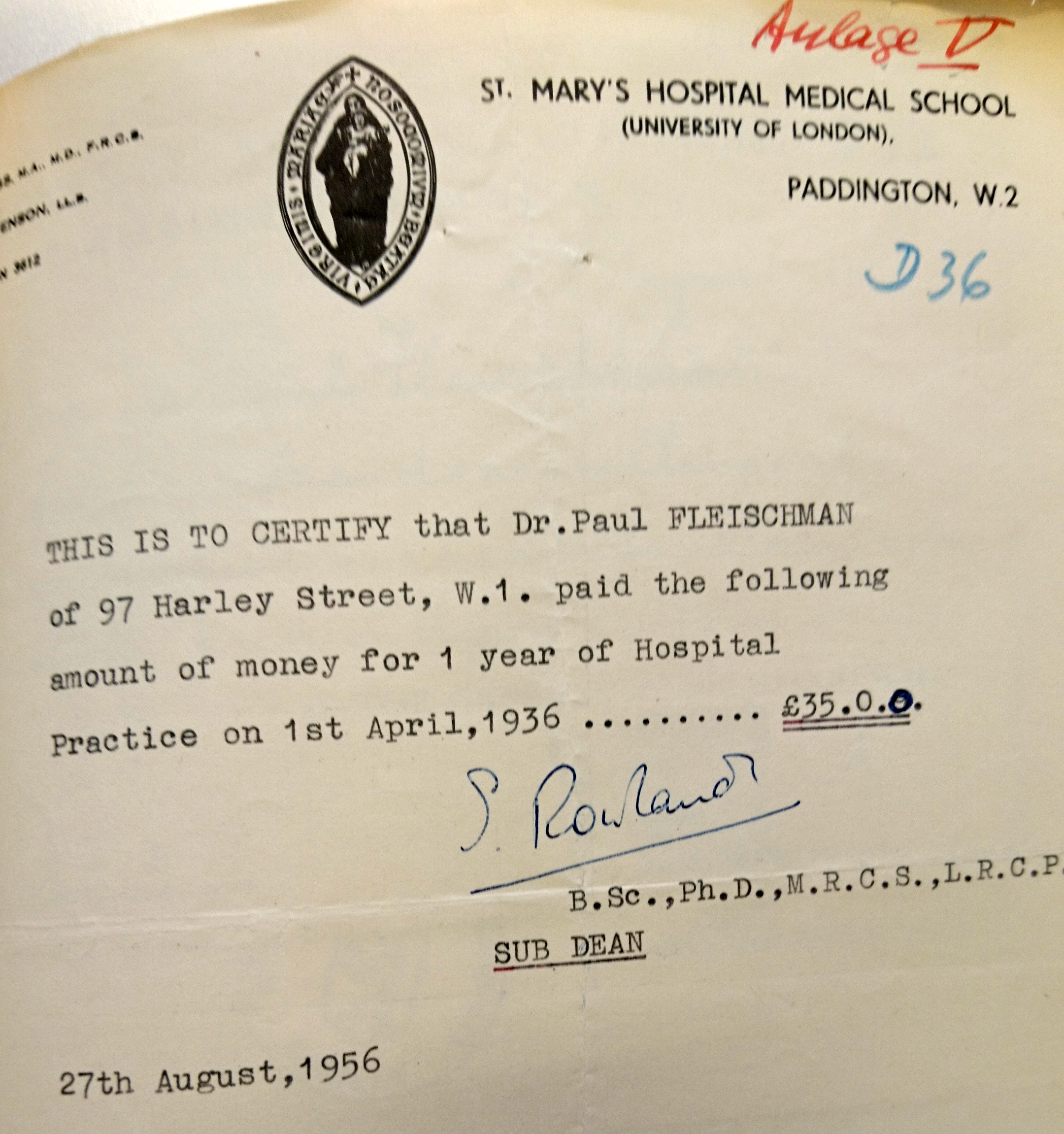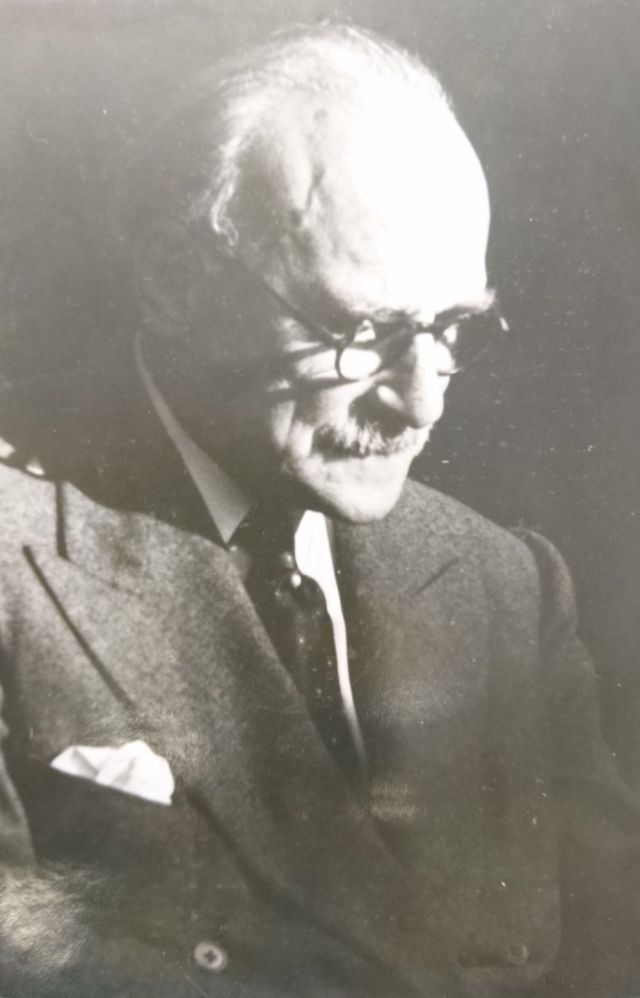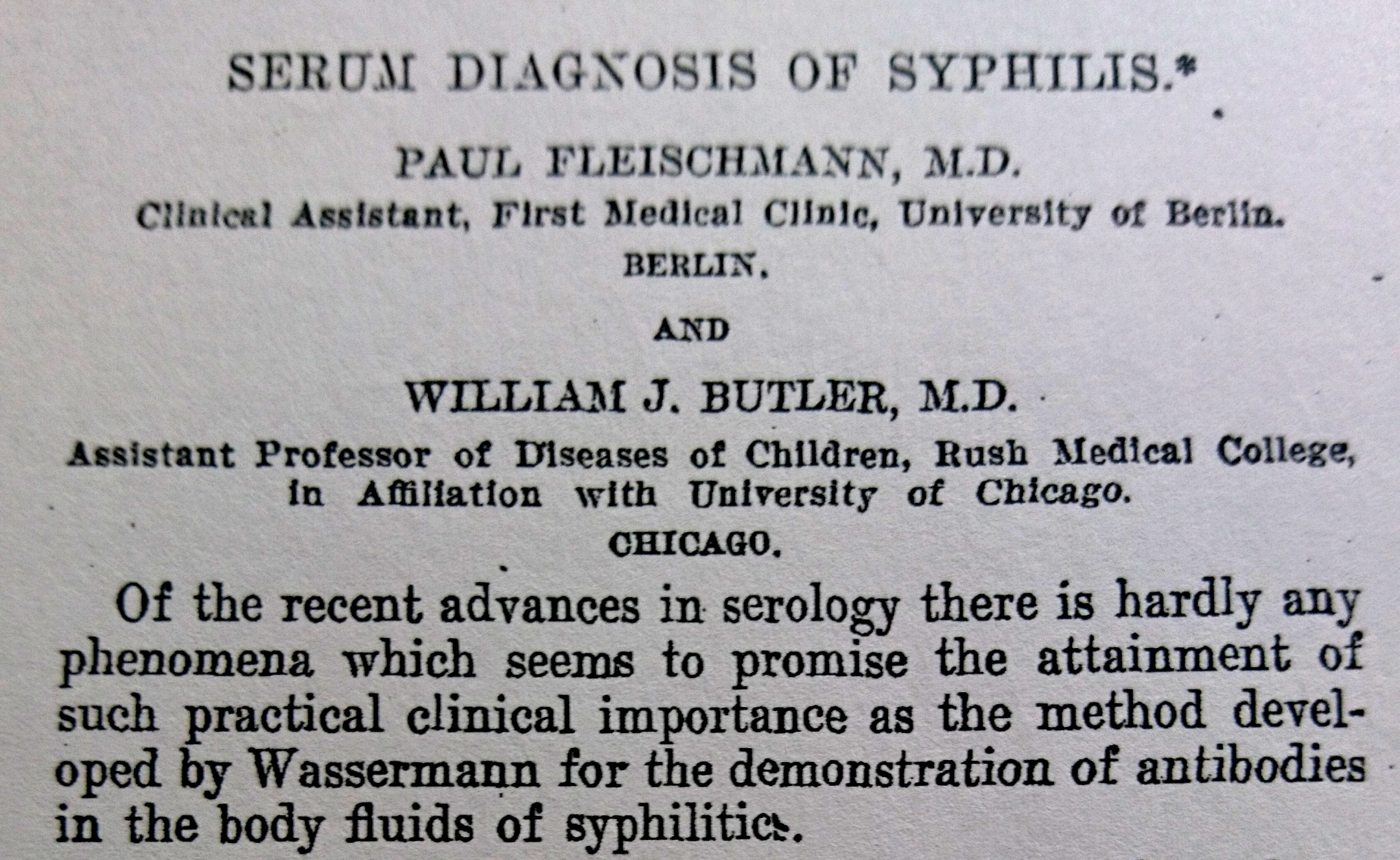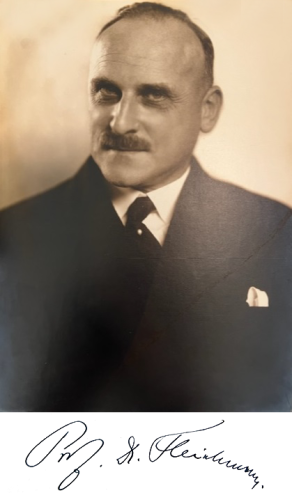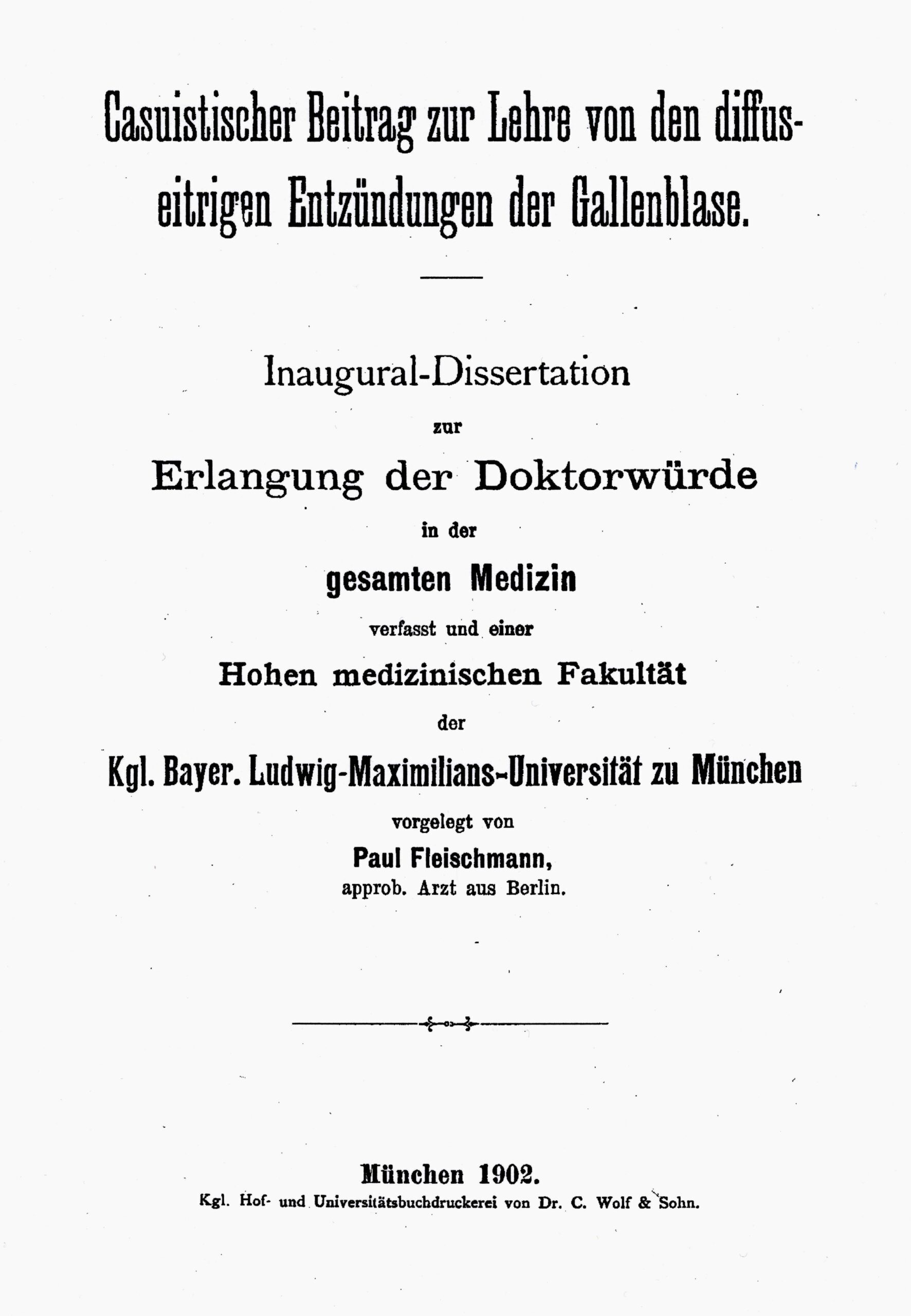Prof. Dr. med. Paul Fleischmann
- Fürth, 23.07.1879
- London, 15.01.1957
- Member since 1928
- Escaped to England in 1936
- Specialist in internal medicine
“I was born as the son of the late factory owner Max Fleischmann and his wife [Frieda, note H Je], née Romberg, in Fürth, Bavaria, on 23 July 1879. I attended the three pre-school classes here from 1885 to 1888 and then moved to Berlin, where I attended the Kgl. Wilhelms-Gymnasium and graduated in 1897. I then devoted myself to medical studies at the universities of Berlin, Freiburg and Munich […]. I passed the state examination in Munich on 4 June 1902,” Paul Fleischmann wrote in his dissertation. His father Max Fleischmann was a respected mirror glass manufacturer in Fürth and a member of the municipal council. Paul Fleischmann’s four grandparents professed the Jewish faith, Fleischmann himself was a baptised Protestant.
Fleischmann also received his doctorate from the University of Munich in 1902. He had written his thesis “Casuistischer Beitrag zur Lehre von den diffus-eitrigen Entzündungen der Gallenblase” under the pathologist Otto von Bollinger. He received his medical licence the same year.
Education and Workplaces
After completing his studies, Paul Fleischmann spent time in Paris with the bacteriologist, immunologist and later Nobel Prize winner Elias Metschnikoff and in London with the pathologist and bacteriologist Almroth Wright. He also interned in Bern with the Swiss internist and circulatory physiologist Hermann Sahli and the physiologist Hugo Kronecker, who worked in Bern.
Feischmann worked at the First Medical University Clinic of the Charité under Ernst von Leyden from 1904 and under his successor Wilhelm His from 1907 as assistant physician, later as senior physician. He habilitated in internal medicine in 1911 and became a private lecturer. He was appointed associate professor at the Friedrich-Wilhelms University in Berlin in 1913. Fleischmann participated in the First World War from 1914 to 1918, partly on active duty and partly as a reservist. After the war, he continued his work as a research assistant at the First Medical Clinic of the Charité. Fleischmann became increasingly friendly with Wilhelm His.
Paul Fleischmann married Elsa Hilliger (1888 – 1976), who came from a family of factory owners in Greifswald. At that time she was the matron at Trautenaustrasse 5 in Berlin, where Ismar Boas’ private clinic was located. Elsa Hilliger was active in socio-political matters and campaigned for the reorganisation and professionalisation of the sisterhood. She published the journal “Die Schwester” together with the orthopaedic surgeon Dr. Paul Mollenhauer from 1917 to 1922. “Die Schwester” was an illustrated monthly journal for professional training in the entire field of nursing. Elsa Hilliger briefly ran the Schloss Fürstenberg sanatorium in Mecklenburg together with Paul Fleischmann, but the project was abandoned after a short time. They both ran the private hospital “Trautenau-Sanatorium” at Trautenaustrasse 5 in Berlin between 1921 and 1932. The internist Hermann Zondek and his brother, the hormone researcher and gynaecologist Bernhard Zondek, also treated their private patients at the Trautenau Sanatorium.
The scientific focus of Fleischmann’s work was cardiac and metabolic diseases as well as infectious diseases and poisoning.
Fleischmann offered courses such as clinical propaedeutics, diagnostics and therapy of acute infectious diseases with patient presentation as well as a repetitorium of internal medicine for advanced students at the Berlin University for the First Medical Clinic of the Charité. Fleischmann collaborated with the writer Alfred Döblin when the latter was able to continue his research work in the laboratory of the First Medical Clinic of the Charité in 1913, parallel to his established practice. Fleischmann and Döblin published together in the Journal of Clinical Medicine on atropine poisoning as well as temperature regulation. The writer and doctor Gottfried Benn was Fleischmann’s patient. Benn’s surviving correspondence with Paul and Elsa Fleischmann documents his friendly relationship with the Fleischmanns and goes back to 1921. The last letters were exchanged in 1956 – one year prior to Fleischmann’s death.
Fleischmann took over as medical director of the Department of Internal Medicine at the Hindenburg Hospital in Berlin-Zehlendorf on 1 January 1929. He became conducting physician of the II Internal Department at the Auguste-Viktoria Hospital in Berlin-Schöneberg after the former had been closed in 1931.
After 1933
Fleischmann, as a Jew, was dismissed by the National Socialists as head physician at the Auguste Viktoria Hospital in July 1934: “You are a non-Aryan in the sense of the Law for the Restoration of the Professional Civil Service of 7 April 1933. I have therefore applied to the Chief President to bring about your retirement in the interest of the service in accordance with § 6 of the B.B-G.”, the district mayor of Berlin-Schöneberg wrote to Paul Fleischmann on 23 December 1933 [compensation file, M 96]. Fleischmann’s teaching licence at the Berlin University was withdrawn as of 19 October 1935.
Ferdinand Sauerbruch praised Fleischmann’s medical and scientific work in a letter of recommendation dated 3 November 1935. Paul Fleischmann, his wife and their three children – aged between 11 and 14 – left Germany on 29 February 1936 and found refuge in Great Britain. Fleischmann was supported by the Society for the Protection of Science and Learning (SPSL., since 1999 CARA, Council for Assisting Refugee Academics, since 2014 Council for At-Risk Academics). He also had two influential advocates in Sir Henry Dale (Nobel Prize for Medicine 1936) and Alexander Fleming (Nobel Prize for Medicine 1945).
Following language examinations and renewed medical examinations (“Triple Exams”, London St. Mary Hospital Medical School, Glasgow and Edinburgh), Fleischmann, aged 58, was able to work as an internist in private practice in London’s Harley Street from August 1937. He was released from internment as an enemy alien after the start of the Second World War.
Paul Fleischmann died at Regent’s Park Nursing Home in London in January 1957 as a result of a stroke. Edward Neville da Costa Andrade, a physicist and friend of Fleischmann’s, found warm words for the deceased during the funeral service on 18 January 1957 and paid tribute to his philanthropy. Fleischmann’s wife Elsa died in March 1976.
Acknowledgements
Greatest thanks go out to Paul and Elsa Fleischmann’s grandson, Tony Glaser, MD, for providing numerous documents and photographs from the family estate. Special thanks are due to Professor Eva-Maria Ulmer, Frankfurt, for putting us in touch with Ursula Glaser, Paul and Elsa Fleischmann’s daughter.
Biography translated by Rachel Hinterthan-Nizan
Sources and Further Reading
Sources